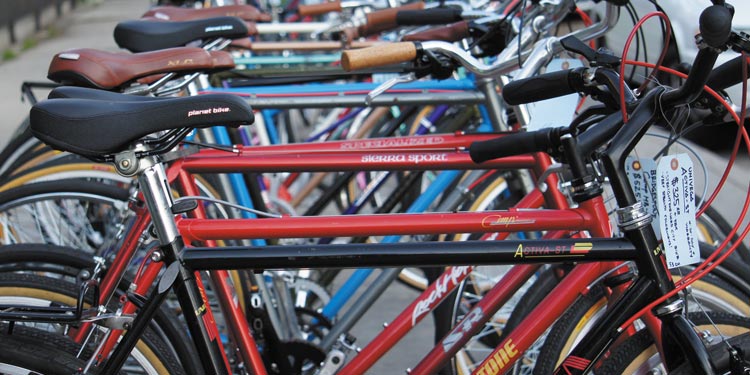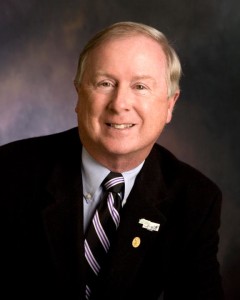
Alta Planning + Design’s John Cock
By Dave Yochum. The most cycling-friendly towns and neighborhoods are “that much more attractive to younger and older people,” according to Brian Jenest, founder of ColeJenest & Stone, the land planning and urban design firm behind the Billy Graham complex in Charlotte.
The Davidson resident said cycling is a “very viable way” to create the street-level ambience that attracts new businesses and homebuyers alike.
“Any time you can create places that provide options for people to move around, whether bikes or walking, it is providing options to the car that are important,” he said.
The business of planning for cycling is big business, said John Cock, a partner at Alta Planning + Design, a consulting company in Davidson that focuses on cycling and urban planning. The company has 150 people in 20 U.S. locations.
“From a demographic and economic development perspective, we are seeing huge changes. The boomers are retiring and the millennials are buying homes. Both of these groups are wanting to lead active lifestyles,” Cock said, noting that one demographic indicator is the number of people getting drivers licenses. “It’s plateauing or has even dropped,” he said.
Lifestyle choices include sports and exercise that can be combined with another activity, like getting to work or to a store. Cock rides his bike to work on Main Street in downtown Davidson as often as he can. He rode it to a steering committee meeting during a $45,000 consulting gig in Cornelius.
“I have four kids at home, so working exercise into a hectic schedule is already more difficult. If there is an activity built into [something else] that it’s not an extra hour, that’s good,” he said.
The company’s mission is to create active communities where bicycling and walking are “safe, healthy, fun and normal daily activities.”
That resonates with him for lots of reasons. “At the personal level, I feel mentally and physically better when I am able to be active. A better father, better businessman, better husband.”
Realtors and homebuilders say the hottest neighborhoods are those connected to greenways and bike trails.
They’re among the most revered amenities in terms of choosing neighborhoods or homes, according to Kathleen Rose, founder of Davidson-based Rose & Associates Southeast in Davidson.
Communities that have more choices around walking and cycling—not just automobiles—are “the ones that enjoy greater success and greater value and greater economic success for the community and greater values for the property owners,” she said.
The median value of homes and condos in Davidson, not necessarily known for million dollar houses, is a whopping $395,772, according to City-Data.
Millennials are part of a boom in walking, running and biking for exercise, not to mention an increase, at least in some cities, in biking to work. Davidson is a good example, Cock said. “We hear over and over people want to move here because it was walkable and bike-able.”
Davidson has recruited top-drawer employers like MSC Industrial and Valspar. According to Mayor John Woods, the town strives to make certain that “drivers have alternatives; bikers and walkers have alternatives. A pedestrian isn’t trying to cross four lanes of traffic.”
“We would fight before we build four-lane roads,” he says.
The Charlotte region has received national attention as one of the least cycling-friendly cities in the United States, according to BetterDoctor.com. Out of the 50 largest American cities, Charlotte ranked 47th.
Places like Portland, Ore., Washington, D.C., and Minneapolis were at the top of the heap. Some 6.14 percent of Portland’s commuters bike to work, which means fewer cars on the road. Washington, D.C., is investing heavily in improving infrastructure for bikers, at the cost of almost $14 per person. Minneapolis has 118 miles of on-street bike paths and 92 miles of off-street bike paths.
Cock said the “Seattles and Minneapolises of the world” are making investments in bicycle infrastructure because high-tech employees and knowledge workers want those kinds of amenities. “Rahm Emanuel invested $18 million in the bicycle infrastructure in Chicago because he wants to steal every high-tech job he can,” Cock said.
“Companies like Valspar and MSC—I imagine could have gone to lots of lower-cost places instead of Davidson,” Cock said.




Discussion
No comments yet.